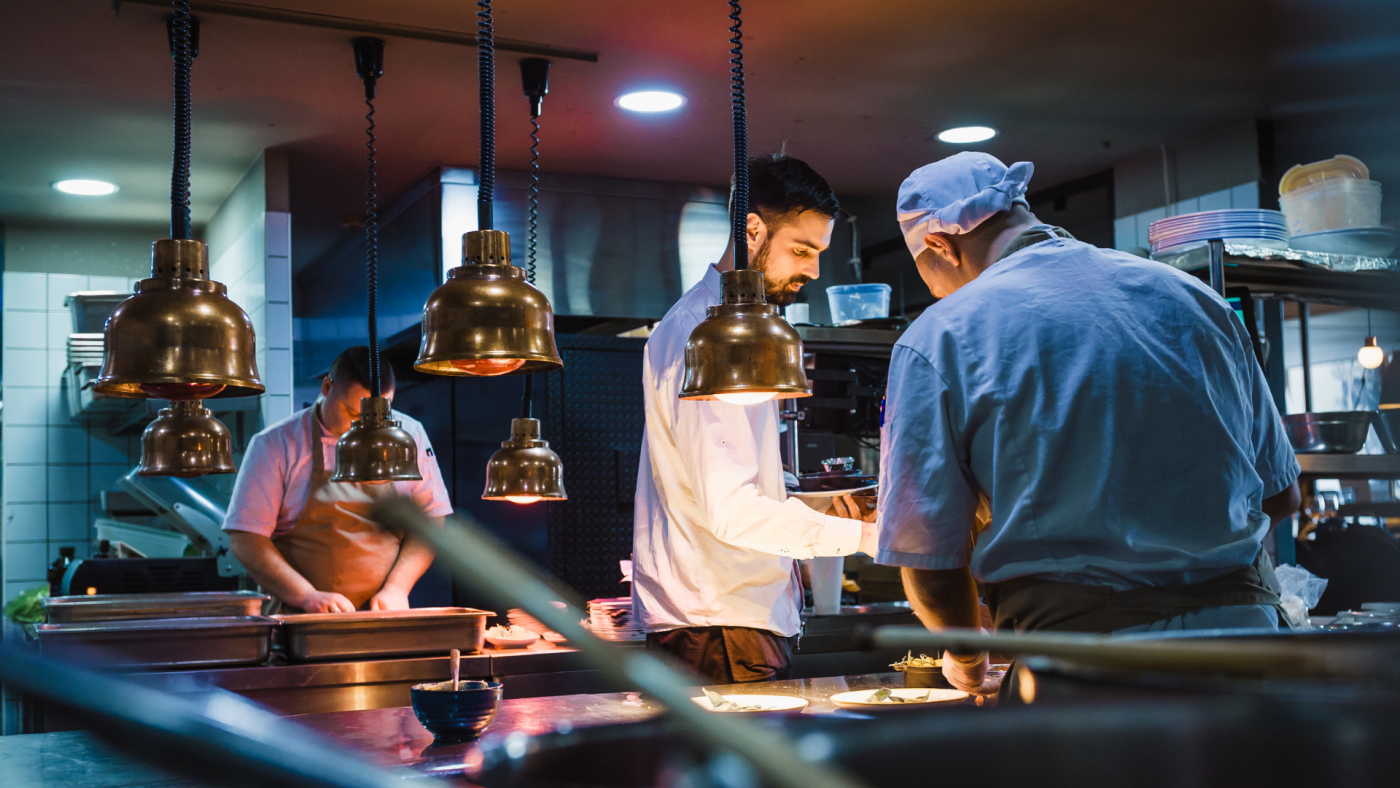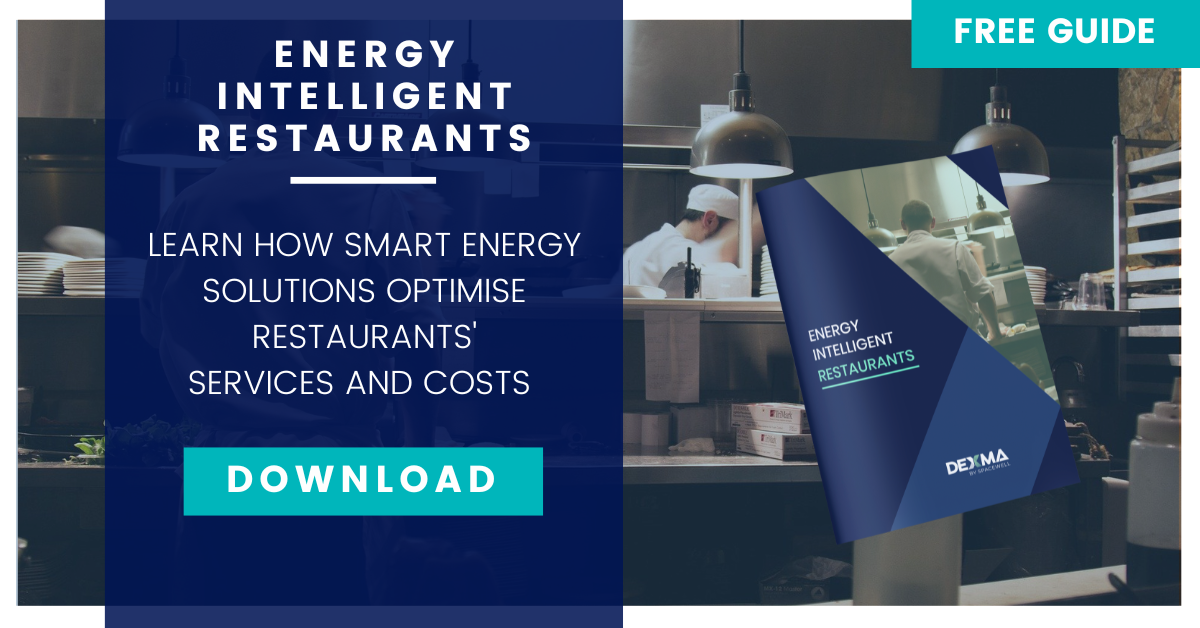Restaurants are important symbols of hospitality and gastronomy throughout Europe. Behind the scenes, however, lies a worrying reality: within the tertiary sector, restaurants are among the most voracious consumers of energy. Their consumption exceeds that of the average commercial building, an astounding disparity that has not escaped the attention of environmentalists.
Restaurants are among the most energy-intensive tertiary sector buildings in Europe, using anywhere from 3 to 10x the amount of energy used by the average commercial building, and can account for anywhere from 4-6% of operating costs according to The Carbon Trust.
As a restaurateur, facility manager or franchise director, your task is to meet sustainability goals while reducing overhead. And to achieve this you should invest in energy efficiency in restaurants, why? In this new article, discover 7 main reasons:
Drivers of Energy Demand in Restaurants and Food Services Facilities
The question often arises: why do restaurants and catering establishments consume so much energy? The answer lies in a combination of factors. Firstly, the use of specialised equipment – cookers, grills and deep fryers – requires a significant energy load. What’s more, the extended opening hours of these establishments, particularly fast-food outlets, mean that they are in a perpetual cycle of energy consumption, as they remain open 24 hours a day. Added to this is the need to maintain a continuous power supply, because downtime is not an option – these places must always be ready to operate.
In addition, complications can arise for small businesses which may not have the financial means to make energy efficiency improvements. The initial investment may outweigh the potential savings in the long term, acting as a barrier to meaningful change.
Waste is another aspect of the issue. In some kitchens, barely 40% of total energy expenditure is devoted to preparing and preserving food. The rest is absorbed by auxiliary operations, such as temperature control, lighting, air circulation and heating water for cleaning purposes. Let’s take the example of the electric fryer, which is part of the basic equipment in many culinary establishments. These appliances consume 11,000 kWh of energy every year. Remarkably, much of this energy is wasted, as these fryers often remain idle for long periods, even in busy fast-food environments. This state of inactivity translates into an expense of around $1,000 per year, effectively paid to keep the fryer dormant.
A close look at the inner workings of food establishments reveals a complex interplay of factors behind the tremendous energy consumption. The story is not limited to the kitchen but extends to energy management and the use of resources. In this landscape, the convergence of cautious energy consumption and fiscal precaution is emerging, highlighting avenues for optimisation and innovation.
7 Benefits of Investing in Energy Efficiency in Restaurants
Perhaps the most immediate benefit is that adopting energy efficiency measures can reduce operational costs. By reducing energy waste, restaurants can see a significant drop in their electricity bills, freeing up resources for other crucial investments.
Restaurants that invest strategically in energy-saving measures can cut costs anywhere from 10 to 30% without sacrificing service, quality, style or comfort – while making significant contributions to their triple bottom line (people, planet and profit).
In fact, according to the EPA, by making efficiency upgrades and taking simple actions to reduce energy consumption by 20%, restaurants and other food businesses can increase profits by 30%.
Number 1:
Increased customer satisfaction and retention throughout the value chain. Investing in energy efficiency doesn’t just have an impact on a restaurant’s operating costs; it also has a direct and positive effect on customer satisfaction. Here is how:
- Comfortable atmosphere: Efficient heating, cooling and ventilation systems ensure that the catering environment is always comfortable. Customers can enjoy their meals without being bothered by extreme temperatures or inadequate air circulation.
- Optimum lighting: Thoughtful lighting design, using energy-efficient bulbs, creates a pleasant and inviting atmosphere. Good lighting can improve the presentation of dishes, making them more attractive and appetising.
- Uninterrupted service: Energy-efficient appliances and equipment are less likely to malfunction or break down unexpectedly. This translates into smoother operations and uninterrupted service, avoiding disruptions that could damage the dining experience.
- Positive perception: When a restaurant makes a commitment to energy efficiency, it is demonstrating a forward-thinking approach.
Number 2:
Business owners and managers get complete visibility into daily operations across multiple locations in a single dashboard.
- Transparent supervision, and simplified management: The concept is elegantly simple: a unified dashboard acts as a central command centre, consolidating data and information from all operational sites. For business owners and managers, this means a holistic view that transcends geographical barriers. Whether you’re overseeing a chain of shops, a network of restaurants or a series of service centres, this one-stop perspective offers a depth of view that was once an operational dream.
- Identify trends and patterns: Beyond the immediate operational benefits, a single dashboard offers the ability to identify trends and patterns across sites. By comparing performance indicators, customer behaviours and market responses, business leaders can uncover valuable insights that would otherwise remain hidden in the noise of individual data sets.
Number 3:
Real-time data collected anywhere, on any device means faster and more intelligent business decisions can be made.
- Comprehensive data in real-time: The power of such a unified dashboard lies in its ability to provide real-time information. Business indicators, sales figures, stock levels, employee schedules – all these critical data points are available at your fingertips, quickly and accurately. No need to scroll through multiple reports or switch between disparate systems. With real-time updates, you can make informed decisions quickly and accurately.
- An overview at all times: Imagine this: a single dashboard that acts as a central hub, seamlessly aggregating data from different locations. This global view, accessible from anywhere, eliminates geographical barriers and gives decision-makers a global perspective.
- Spot trends and act quickly: Aggregate data isn’t just about the moment – it’s about identifying trends and patterns. By comparing performance indicators and customer behaviour across all sites in real-time, decision-makers can identify emerging trends and seize opportunities before they arise.
Number 4:
Understanding which parts of your restaurant operations can be automated and reduce the total cost of ownership for key assets (refrigeration units, ovens, fryers…)
Number 5:
Turning off major energy-consuming appliances like fryers and HVAC systems even for a few hours can lead to huge savings or even rewards through demand response schemes.
- Capitalising on demand response programmes: As well as saving money, switching off energy-consuming appliances can open the door to rewards. Demand response schemes, which are widespread in many regions, offer incentives to businesses that temporarily reduce their energy consumption during periods of high demand. The unified dashboard provides the information needed to actively participate in these schemes, enabling rewards to be earned while contributing to the stability of the energy network.
Number 6:
Contribute to a better-managed catering operation and a cooler, more pleasant kitchen environment, which can increase staff comfort levels and improve morale with happier and more motivated servers.
- Boosting customer satisfaction: Efficient operations mean better service. When orders are accurate and delivered on time, customer satisfaction soars. The ripple effect extends to staff morale – satisfied customers often lead to satisfied waiters, creating a positive feedback loop.
Number 7:
In some instances, improved management of energy consumption in catering can result in better quality of food and hygiene standards.
We hope you found this article helpful. However, if you’re not convinced yet, we encourage you to take the practical example of a Burger King franchise that saved over € 5,500 annually thanks to a minimal investment that paid for itself in less than 6 months! Curious? Download the free case study now!




